- October 18, 2023
Why Do Dogs Chase Shadows? Instinct & Behavior Explained
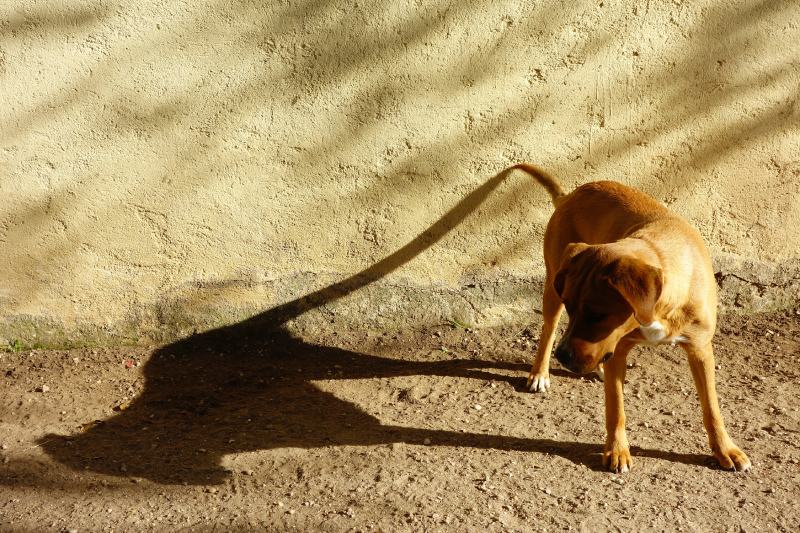

Dogs are full of quirky antics and questionable behaviors, so much so that you could spend hours scrolling and laughing at videos shared on social media. Shadow chasing is one of them and is one that deserves further investigation.
Dogs chase shadows because their eyesight is more adapted to spotting movement, which might arouse their prey drive or impulse to chase. While it’s entertaining for us to watch, isolated incidents can be cute, but when it becomes excessive, it can be a sign of boredom, frustration, and anxiety in dogs. It might even become an obsession in more severe cases as your dog grows frustrated by being unable to catch it.

Shadows From a Dog’s Perspective – Instinct and Behavior Explained
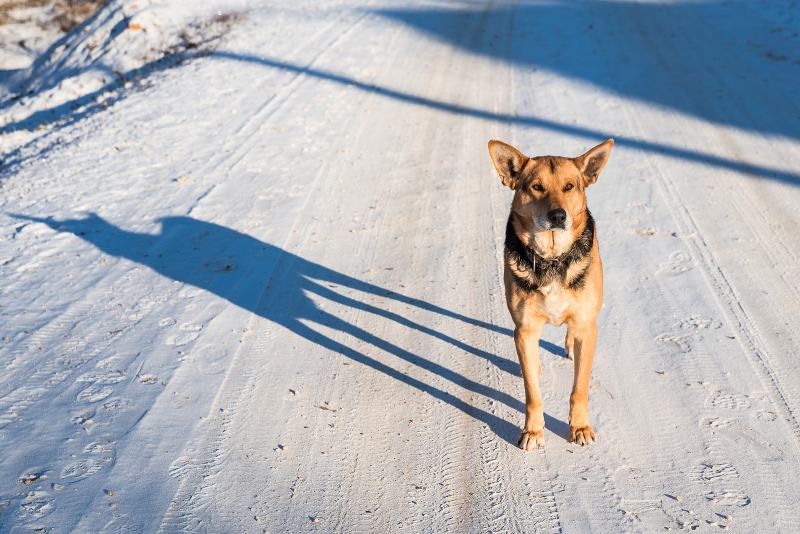
Despite their intelligence, dogs cannot always properly explain certain occurrences in their environment, such as reflections, thunder, and other loud sounds. Dogs cannot cognitively comprehend the alarming events that sometimes occur out of the blue in their environment.
How Shadows Are Perceived
Dogs do not comprehend shadows in the same way that humans do. From their perspective, shadows may be strange entities that pique their curiosity and spark an innate desire to chase them, or they may be terrifying objects to be avoided at all costs, particularly if they come suddenly.
The Influence of the Prey Drive
Especially in hunting or herding breeds, dogs are hard-wired to pursue moving objects because of their prey drive. Therefore, shifting shadows and moving lights can trigger a dog’s prey drive. But unlike when they chase a ball or prey, they never experience the joy of the catch.
Herding dogs are bred for hard work. Their active minds can quickly deteriorate into obsessive behaviors like chasing and biting if given nothing to do.
Normal and Compulsive Chasing
Shadow-chasing behavior can be obsessive or compulsive, and it’s simple to tell the difference between normal and worrying shadow-chasing. Typically, young dogs may pursue shadows for a short while, perhaps a minute or two, and then give up. However, you must assess why your dog won’t quit chasing shadows.
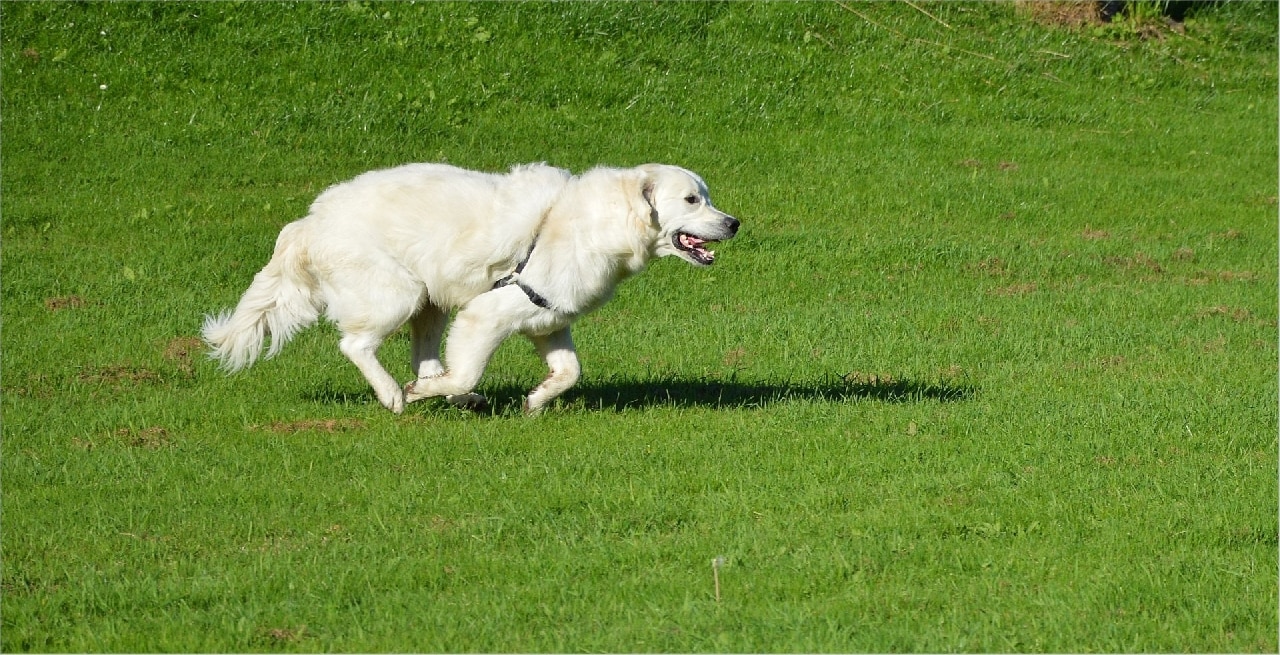
Reasons Why Dogs Chase Shadows
Dogs chase shadows for several reasons. While some are not a cause for alarm and might be enjoyable to watch, others require veterinary assistance.
Prey Drive
As we mentioned before, shadows can trigger a dog’s natural prey drive when they move. This is not the case for all dogs, but especially for hunting or herding breeds like Border Collies or German Shepherds. The prey drive is usually the most common reason for a dog to chase shadows, but if the behavior becomes obsessive or continuous, they could be chasing shadows for other reasons.
Curiosity and Excitement
Dogs and puppies are curious creatures. Anything that moves or seems unusual will naturally pique their curiosity. A dog may also become excited at the moving object, much like a ball being thrown. Puppies are still young and learning about the world, but shadow chasing should stop after one or two chases.
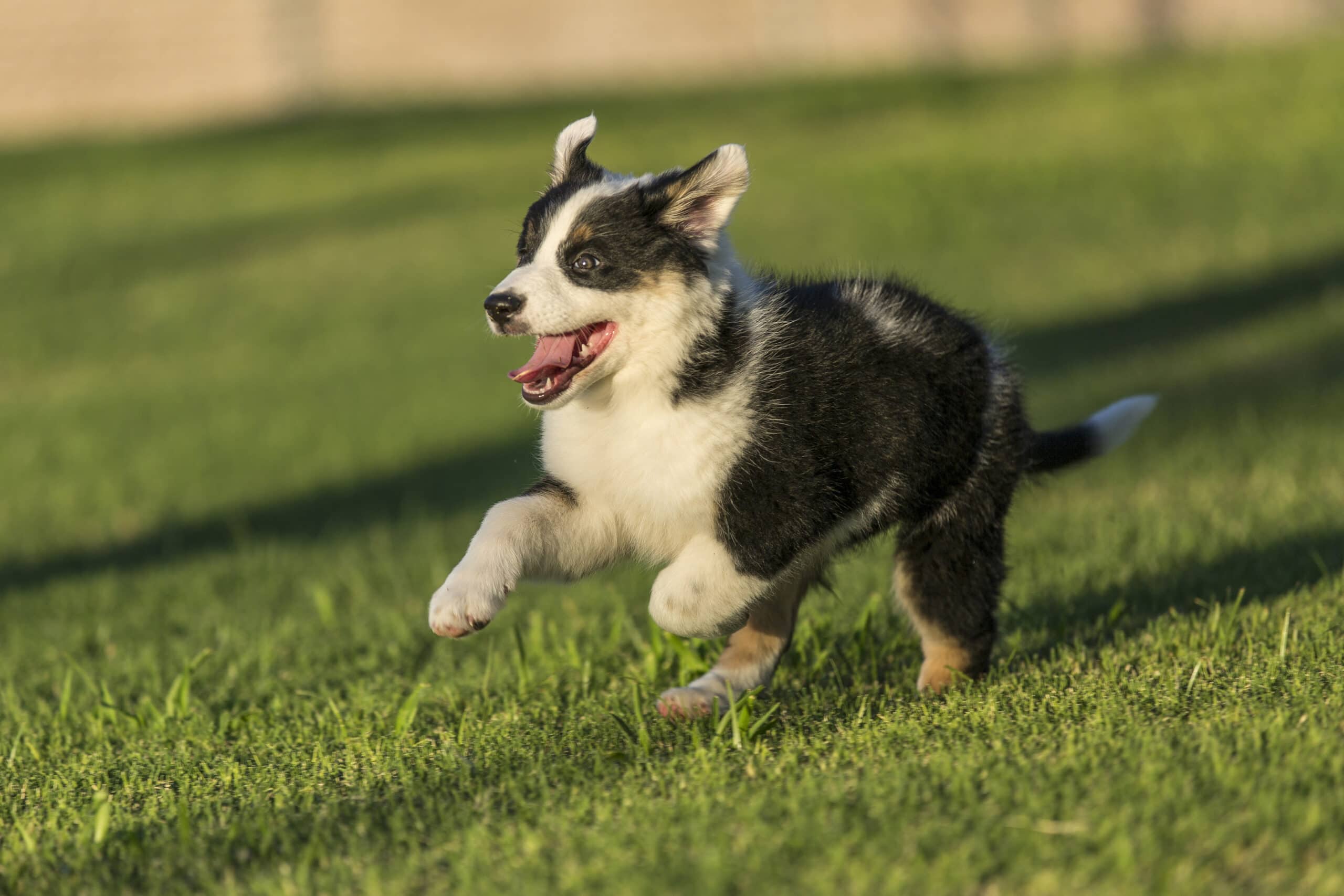
Energy Outlet
If shadows excite your dog, they may chase them to expel energy, especially if it has built up due to your busy work schedule or any other reason for missing their daily walk or run.
Dogs can become excited due to pent-up energy even if given enough exercise. However, over-excitement is frequently an indication of insufficient physical and mental stimulation, and you may need to increase their physical activity.
Boredom
If your dog becomes bored, they will come up with ways to entertain themselves, such as chasing shadows. This is especially true for indoor dogs that do not receive enough physical or mental stimulation. If you suspect your dog is bored, it could be why they chase shadows or engage in other behaviors such as tail chasing or digging up the garden.
Anxiety
Sadly, our dogs can experience anxiety like we do for various reasons. If a dog is experiencing anxiety, they often engage in unwanted behaviors, which can also become excessive. Anxiety in dogs can be due to separation, loud noises, or even changes in routine, like moving to a new home. Chasing shadows can be a sign of anxiety.
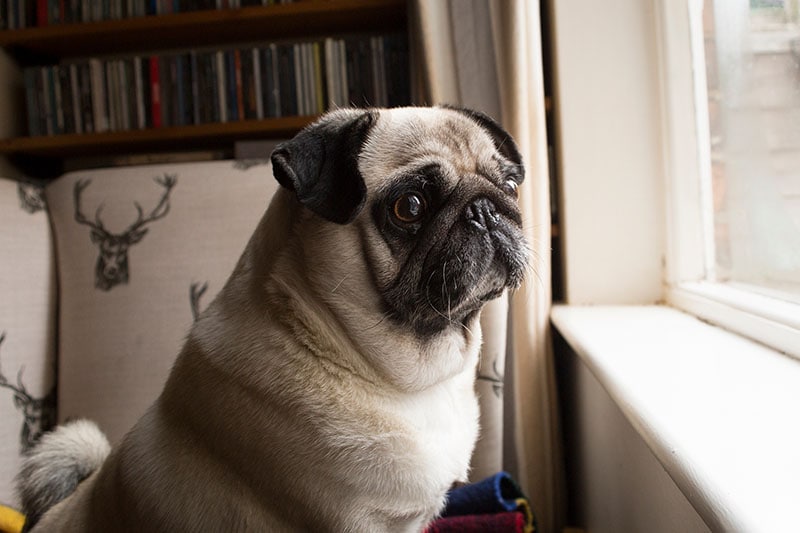
Obsessive Canine Disorder
Dogs can develop an unhealthy fixation on a motion or object through obsessive, repetitive behavior. When not addressed at the start, excessive shadow chasing can grow into a severe form of canine compulsive disorder (CCD).
CCD affects your dog’s quality of life and is remarkably similar to OCD in humans. Hours of tail-chasing, spinning, gazing, and licking are some signs of CCD that can lead to self-harm. If you feel your dog has this illness, you must speak with your veterinarian and a behaviorist.

Is it OK if My Dog Chases Shadows?
An active dog may occasionally chase shadows, which can be a normal behavior. However, if it persists, it may indicate an underlying behavioral disorder such as anxiety or CCD.
You will need to watch your dog closely to determine whether the shadow chasing is excessive. Generally, if your dog is not interested in anything else and prefers to spend time chasing shadows, it is likely an obsessive behavior.
If your dog did it once or twice, it may not warrant any concern, but you must ensure that your dog doesn’t become obsessed with doing it. It is best to talk to your veterinarian or a behavioral therapist to determine if your dog has an underlying concern that needs attention.
How to Stop Your Dog from Chasing Shadows
The easiest method to get a dog to quit chasing shadows is to deal with the underlying issue. Distracting your dog will stop them from immediately chasing their shadow, but it will only be a temporary solution. Here are some tips to help your dog stop chasing shadows:
- Take your dog for regular walks and runs. A tired dog will not be bored and is less likely to chase after shadows or engage in other unwanted behaviors.
- Provide your dog with regular mental stimulation. Interactive toys encourage your dog to forage for food and provide much-needed mental exercise. You can use items such as feeding puzzles and snuffle mats.
- Teach your dog basic commands such as “sit” and “stay.” Your dog may occasionally need a command to help jolt them out of their curiosity with shadows. Your dog will quit chasing shadows if you reward them with treats after they have calmed down and obeyed their command.
- When you see shadows, try to divert your dog’s interest with an interesting toy or other appealing object.
- You can help your dog avoid shadows in their environment by putting dark curtains in areas where they spend more time.
- Hiding any reflective objects may reduce the number of shadows in your home, which will ease your dog’s worry and anxiety until you have the issue under control.
- Seek expert help. When your dog is obsessive about chasing shadows, and nothing appears to divert their interest, it may be time to call in an expert. A good behaviorist can guide you through the process of changing your dog’s behavior. In extreme cases, a veterinarian may also recommend medication for dogs with a compulsive disorder.

Conclusion
While watching a dog chase shadows may appear strange and entertaining at first, it all makes sense once we learn the reasons behind the behavior. Chasing is an innate behavior for dogs due to their prey drive, especially in breeds bred for herding or hunting. If your dog chases shadows obsessively, it is best to contact your veterinarian and animal behaviorists to determine if any underlying concerns need attention.
Featured Image Credit: canbedone, Shutterstock
Tags
What do you think?
Related Articles

New Puppy Checklist: Gear You’ll Need for Your New Dog
Getting a new puppy is really exciting, but before you welcome them home, it’s important to prepare your space for them. Since puppies need a

How Big Do Mini Poodles Get? Vet Reviewed Average Weight & Growth Chart – Dogster
The information is current and up-to-date in accordance with the latest veterinarian research. Learn more » When you buy a Miniature Poodle, you might not

Can Police Dogs Smell Nicotine? Vet Verified Facts & Info – Dogster
The information is current and up-to-date in accordance with the latest veterinarian research. Learn more » While cigarette sales have been declining steadily for decades,

How Old Is 5 in Dog Years? Vet-Approved Guide to Each Size of Dog – Dogster
The information is current and up-to-date in accordance with the latest veterinarian research. Learn more » A common method for calculating a dog’s age is

